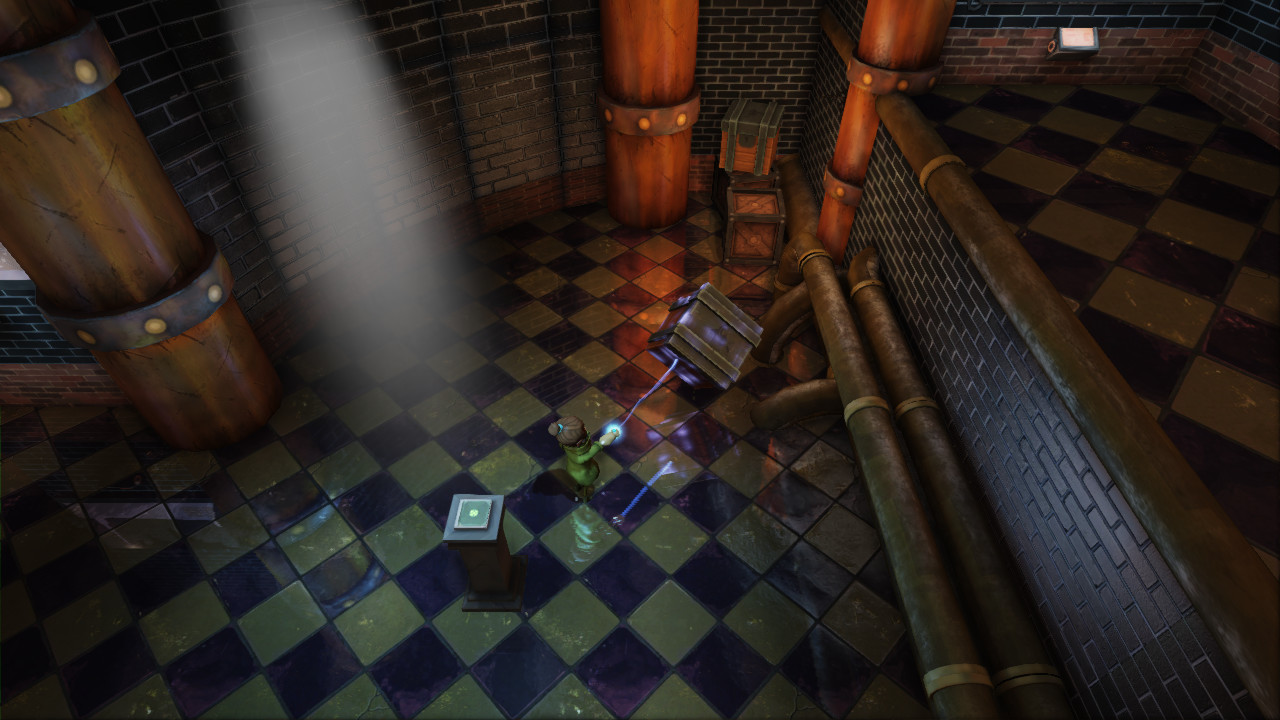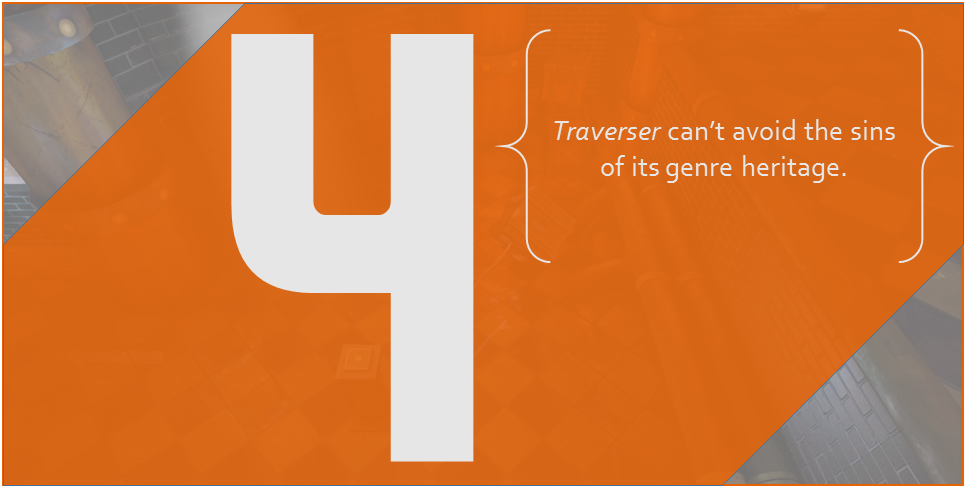Traverser Fails To Navigate Steampunk's Pitfalls
City-state empires, impractically large machinery, Victorian bird masks, and villains with twirling mustaches. Gatling Goats’ Traverser isn’t being shy with its steampunk aesthetic. But it’s also doing more with the genre than adopting a pastiche of visual tropes, diving into its thematic waters to attempt to tap into something more resonate than copper spider robots. Steampunk, insofar as it can be succinctly generalized, effectively serves to allow its audience to have their cake and eat it too. It recognizes the impracticality of early 20th-century industrial optimism, while simultaneously reveling in that same dream of a finite, knowable universe, at which center humanity resides and dictates. Steampunk is perhaps among the most self-indulgent of genres, but at its core, it seeks to display the ignorance and danger of unregulated industry and nostalgic refusals to modernize. With Traverser, Gatling Goats have attempted to inverse steampunk’s tradition of romanticized empire within an Orwellian dystopia, while also weaving in elements of environmentalism and socialist sentiment.
Within this melting pot of political disorder, Traverser emerges only half formed. The foundation is built, pieces are put in motion, but with nothing to hold them together Traverser is left to scramble from one plot point to the next, as if exposition for exposition's sake is enough to guide the game toward a state of cohesion.

Traverser’s world is one constructed in the aftermath of a global freeze. The sun has died, chilling the earth’s outer layer and forcing humanity to take refuge underground. With the surface now inhospitable, clean air becomes the most valuable currency in the city of Brimstone, humanity’s last bastion of civilization. Controlling the city’s air supply, and by extension, the city itself, is the Raven Corporation, a comically evil industrial empire whose spy birds and art deco propaganda posters do little to hide its nefarious intent. Entering into the center of an underground civil war, largely by happenstance, is Valerie Bennett, a recently appointed traverser who, on account of her position, is able to travel to both the upper and lower city in order to “keep the peace” between the two socioeconomically dissonant locals.
World building is among the few areas that Traverser handles quite well. The concept of a dualistic city personified by both their inverse political and physical positions is a rather blunt analogy to the contemporary gap between the upper and lower class, but it functions as a clever hook that serves both narrative and mechanical goals. Theoretically.
While Traverser displays confidence in crafting its setup, like much of steampunk, it doesn’t know where to take it after the introduction. One of steampunk’s most persistent issues is in fixating on the setting to a degree that partially, if not entirely overshadows the actual happenings of the place that has been so meticulously created. To its credit, Traverser goes to great lengths to flesh out the narrative threads utilized to craft its environments and characters, but it remains so married to what has become an almost fetishistic obsession with steampunk's look that it is unable to carry them through to completion.
Traverser's tries to do more than it can realistically address.
The best it can do is to borrow Bioshock’s now ubiquitous form of environmental storytelling, but even then, the stories left behind by the residents of Brimstone are but disorderly snapshots of a world which feels constructed out of cardboard and glue; a city which appears vibrant and sprawling until you catch a glimpse of the empty stage immediately behind its unconvincing front. Traverser’s narrative is quickly bogged down by more characters and goals than it can support, leaving it to introduce plot points only when they are immediately needed, before immediately transporting you to the next.
It is easy to characterize Raven Corp. as evil, in fact, contemporary sentiment on capitalism effectively does the work for you, but explaining how they view themselves and why they operate as they do (both of which Traverser attempts) in a way that extends beyond cartoonish villainy is a lot harder. So is creating a rebellion movement with a more nuanced plan than giving air equally to everyone, as if the only stopping block in the path to true economic equality is corporate greed. Nevermind detailing why the rebellion is also convinced the surface has become habitable again, and how they have determined that it is worth risking the whole of humanity to see for themselves if it’s true. Traverser may be altruistic in its fictional worldview, but it tries more than its narrative can hope to adequately address, and the game as a whole suffers for it.

Filling the gaps between Traverser’s verbose voiceovers, are, predominately, a lot of rocks (and enough boxes to spare). Traverser plays as something halfway between a physics puzzler, and a 3D platformer. After becoming a traverser Valerie is equipped with a gravity glove, allowing her to move objects far too heavy to lift by hand in order to progress through increasingly cluttered environments. Naturally, in a world full of retro-futuristic technology, this entails a lot of heavy objects being put on presser plates, opening doors to more objects to be placed on more pressure plates. These puzzles are relatively inoffensive, but they’re also tremendously dull, requiring less in the way of logical thinking than they do patience on account of Traverser’s many obtrusive design decisions.
Most disruptive of these is having the camera locked at an isometric perspective. 3D platformers already have a history of camera related struggles, and all of them – environmental clipping, obscured platforms, inexplicable control anomalies – become exaggerated when the player is forced to view everything from a fixed angle. The lack of gamepad support also causes the platforming to be finicky, due to the lack of analog control, and the tradeoff of using the mouse to control objects with the gravity glove is minimal at best. Objects frequently misbehave and move at speeds and angles which are difficult to gauge, and even harder to control. This isn’t hugely problematic, as Traverser rarely presents you with puzzles requiring a great amount of precision, but during boss fights, every control issue becomes a monumental hurdle to overcome. The troublesome checkpoint system is just melted icing on the half-baked cake.
Final Word
Traverser tries to differentiate itself from the swathes of steampunk media being released, but ultimately its problems lie mostly in an inability to do so. Gatling Goats built a world I was ready to get lost in, but as the through-line began to bloat and exposition-laden characters continued to be introduced, the Brimstone’s layers of intrigue fell away, leaving its streets filled with nothing but familiar box puzzles and Victorian fashion trends in its wake.


